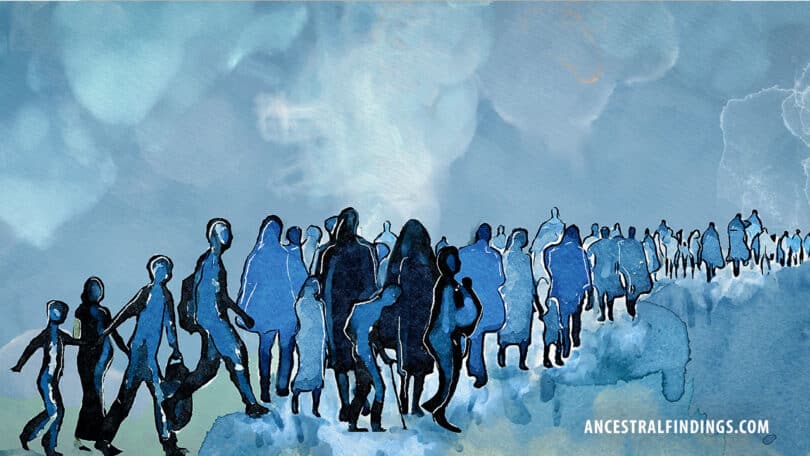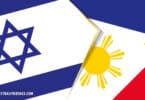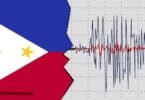The Philippines, an archipelago of over 7,000 islands, has a rich migration history within and beyond its borders. Understanding these migration patterns is essential for genealogists tracing their Filipino ancestry, as the movement of people across the islands and overseas has played a significant role in shaping family histories.
The Intra-Island Movements
The geography of the Philippines, with its numerous islands and diverse landscapes, naturally encouraged internal migration. People moved from one island to another for various reasons, including trade, agriculture, and conflict. These movements blended cultures and traditions, creating the diverse communities we see across the archipelago today.
Exploring Intra-Island Migration:
Intra-island migration in the Philippines was often driven by the search for arable land or better living conditions. For example, during the Spanish colonization, many Filipinos moved from the northern regions to the Visayas and Mindanao to escape the heavy taxes and forced labor imposed by colonial authorities. Similarly, inter-island trade routes encouraged the movement of people between Luzon, Visayas, and Mindanao, bringing with them their customs, languages, and traditions.
For genealogists, tracing these movements requires focusing on regional records, local histories, and oral traditions. Family stories passed down through generations may explain where your ancestors lived and why they moved. Exploring land records, tax documents, and even old maps can reveal settlement and migration patterns.
Where to Find Records of Intra-Island Migration:
1. Local Archives and Libraries: Many provinces and municipalities maintain archives that include records of land transfers, tax payments, and other documents that can indicate migration patterns. Visiting these local archives can be a treasure trove of information.
2. University Libraries: Institutions like the University of the Philippines have extensive collections of historical documents that include records of internal migrations. These collections can provide context and specific data on how and why people moved within the country.
3. Local Historians and Cultural Organizations: Engaging with local historians or cultural groups can provide insights into the migration patterns specific to a region. These experts often have access to records and oral histories that may not be available in official archives.Overseas Migration: The Global Filipino Diaspora
While intra-island movements were significant, the story of the Filipino people is also one of global migration. From the Manila-Acapulco galleon trade during the Spanish era to the modern-day Overseas Filipino Workers (OFWs), Filipinos have long been on the move, contributing to communities worldwide.
The Historical Roots of Overseas Migration:
Filipino overseas migration has deep historical roots. The Manila-Acapulco galleon trade started in the 16th century and was one of the earliest examples of Filipinos moving abroad. Filipino sailors and merchants traveled to Mexico and Spain, sometimes settling in these foreign lands. In the 19th century, Filipino students known as the “Ilustrados” went to Europe to study, many of whom remained abroad to participate in the political movements that eventually led to Philippine independence.
In the 20th century, Filipino migration expanded globally. After World War II, many Filipinos moved to the United States, Canada, Australia, and other countries for better economic opportunities. The advent of the OFW phenomenon in the 1970s further accelerated this trend, with millions of Filipinos working and settling abroad.
Tracing Overseas Migration:
Tracing Filipino ancestors’ overseas migration can be challenging and rewarding for genealogists. The key is to follow the paper trail left by immigration records, naturalization documents, and passenger lists. Each record can provide valuable information about your ancestors’ journey and life in a new country.
Where to Find Overseas Migration Records:
1. National Archives and Records Administration (NARA): If your ancestors migrated to the United States, NARA is an excellent resource for immigration and naturalization records. Passenger lists, which often include details about a person’s age, occupation, and final destination, can be particularly useful.
2. Library and Archives Canada: For those tracing Filipino ancestry in Canada, this archive offers immigration records, census data, and other documents that can help piece together your family’s migration story.
3. State Libraries and Archives: Countries like Australia, the United Kingdom, and Spain have state archives that house records of Filipino immigrants. These archives often include ship manifests, employment records, and other documents that can provide insight into your ancestors’ lives abroad.
4. Online Genealogy Platforms: Websites like Ancestry.com and MyHeritage.com offer access to global immigration records, including those for Filipinos. These platforms often provide search tools that allow you to narrow down records based on names, dates, and places.The Impact of Migration on Filipino Identity
Migration has significantly shaped Filipino identity, whether within the islands or overseas. Blending cultures and introducing new ideas and practices through migration have contributed to the rich history of Filipino heritage. Understanding how migration affected your ancestors can provide a deeper appreciation of your family history and the broader context in which they lived.
How Migration Influences Genealogy:
Migration often led to changes in names, languages, and even religions as people adapted to new environments. For genealogists, this means being aware of potential variations in family names, adopting new customs, and the influence of different cultures on your ancestors. By tracing these changes, you can gain a better understanding of your family’s journey and how they contributed to the broader narrative of Filipino history.
Embracing the Journey of Migration
Migration is at the heart of Filipino history, shaping the lives of millions both within the archipelago and across the globe. Tracing these movements is crucial for genealogists to understand the full scope of your family’s past. Whether your ancestors moved from one island to another in search of better opportunities or ventured overseas to start a new life, their journeys are a testament to the resilience and adaptability of the Filipino people.
By exploring the records, engaging with local histories, and piecing together the migration stories, you can uncover your ancestors’ paths and better understand your heritage. The journey of tracing these migrations is not just about finding where your ancestors came from—it’s about understanding the factors that shaped their lives and, in turn, shaped yours.
Read More:
“The Philippine Islands, 1493-1898” by Emma Helen Blair and James Alexander Robertson
This comprehensive collection provides historical documents and accounts that offer a deep understanding of the Philippines’ early migration and settlement patterns.
“Barangay: Sixteenth-Century Philippine Culture and Society” by William Henry Scott
This book looks at pre-colonial Philippine society, including intra-island migration patterns and how communities were organized across the archipelago.
“The First Filipino: A Biography of José Rizal” by Leon Ma. Guerrero
While this book primarily focuses on the life of José Rizal, it also provides context on the social and political factors that influenced migration during his time.







